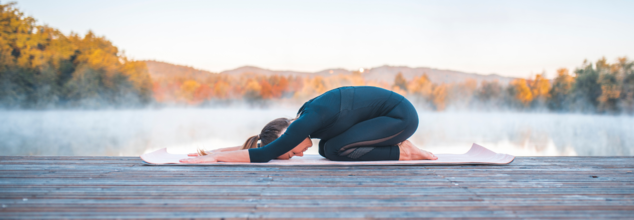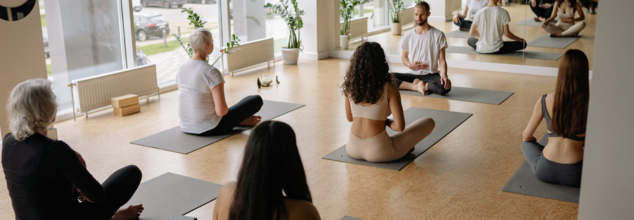- Health Conditions A-Z
- Health & Wellness
- Nutrition
- Fitness
- Health News
- Ayurveda
- Videos
- Medicine A-Z
- Parenting
- Web Stories
Does The Requirement Of Exercising Impact On One's Gender?

Credits: Canva
A major study published in 2024 in the Journal of the American College of Cardiology has revealed that exercise doesn’t benefit men and women equally. Analyzing data from over 412,000 American adults between the ages of 27 and 61, researchers found that women gain more health benefits than men from the same amount of exercise—especially when it comes to reducing the risk of death from heart disease and other causes.
The study drew from two decades of data (1997–2017) collected through the U.S. National Health Interview Survey, linked to the National Death Index to track participant outcomes through 2019.
How the Study Was Conducted
Participants were surveyed on how much and what type of physical activity they performed—whether aerobic exercises like running and swimming, or strength training like lifting weights. The survey also collected details about socioeconomic background, existing health conditions, and other lifestyle factors.
To keep the data focused on the general population, the study excluded people with serious illnesses like cancer or coronary heart disease at the time of enrollment.
Over the study period, almost 40,000 people died, including more than 11,000 from cardiovascular-related causes such as heart attacks or strokes.
Women See Greater Gains in Less Time
One of the most striking findings was the difference in how quickly women saw benefits. Women who did 140 minutes of moderate-to-vigorous physical activity (MVPA) per week saw the same drop in mortality risk (18%) as men who exercised for 300 minutes—more than double the time.
Across all levels of physical activity, women consistently saw greater survival benefits than men. For example:
Women who met the minimum aerobic exercise recommendation (150 minutes/week) had up to a 24% lower risk of death from any cause, compared to just 15% for men.
In terms of heart health specifically, active women had a 36% lower risk of dying from cardiovascular disease, compared to 14% for men.
Strength Training Also Favors Women
Strength training showed similar patterns. Women who lifted weights or did muscle-strengthening activities at least twice a week reduced their overall risk of death by 19%, compared to 11% for men. For cardiovascular mortality, the numbers were even more impressive—a 30% reduction in risk for women, versus 11% for men.
“What surprised us the most was the size of the reduction in cardiovascular mortality from strength training in women,” said study co-author Dr. Martha Gulati, a preventive cardiologist at Cedars-Sinai.
Limitations and Takeaways
The study has some limitations. Exercise habits were self-reported, which can lead to inaccuracies. It also only tracked leisure-time exercise—not physical activity done during work or chores.
Still, the findings echo previous research and could reshape how doctors talk about fitness. While everyone benefits from exercise, women may get more out of every minute, making even small efforts worthwhile.
As Dr. Christine Albert, a cardiologist not involved in the study, said: “This should motivate more women to move, knowing that even short bursts of regular exercise can have a big impact on their long-term health.”
Grounding Yoga Poses That Can Help You Wind Down After A Long Day

(Credit-Canva)
Yoga is a great way to wind down and relax. While exercising after a long day may seem counterproductive, there are many other reasons why one should do yoga if they are tired and overwhelmed. There are certain poses and movements that help you find your rhythm, revitalizing you and helping your body calm down and relax. Practicing this before ending your day can help you get a restful sleep, instead of the hurried and uncomfortable sleep you get when you crash out.
These grounding practices can be incredibly soothing for the nervous system, helping to shift you from that 'fight or flight' mode into a state of calm and rest. They are comforting for your mind and body, preparing you for a peaceful evening and a restful night. So, if you're feeling wired but tired, these grounding yoga poses are your invitation to unwind, find your center, and let go of the day's stresses.
Child's Pose (Bālāsana)
Gently rest your forehead on the mat with your knees wide or together, and arms stretched forward or alongside your body. This pose calms the brain and helps relieve stress and fatigue. It's like a gentle hug for your insides.
Legs-Up-the-Wall Pose (Viparita Karani)
Simply lie on your back and prop your legs up against a wall or chair. This inversion helps to drain stagnant energy from your legs and feet, promoting relaxation and easing tired legs. It can also soothe the nervous system.
Supported Bridge Pose (Setu Bandhāsana Variation)
Lie on your back with knees bent and feet flat on the floor. Lift your hips and slide a block underneath your lower back for gentle support. This opens the chest and front body while remaining passive and calming. It's a gentle way to release tension.
Supine Spinal Twist (Supta Matsyendrāsana)
Lying on your back, draw one knee towards your chest and gently guide it across your body, keeping your shoulders grounded. Look in the opposite direction of your knee. This gentle twist releases tension in the spine and hips, promoting relaxation. It feels like a gentle wringing out of stress.
Butterfly Pose (Baddha Konāsana)
Reclined Variation: Lie on your back and bring the soles of your feet together, allowing your knees to fall open gently. You can place pillows or blocks under your knees for support. This pose gently opens the hips and groin, areas where we often hold tension. It's a soft and releasing stretch.
Corpse Pose (Śavāsana)
The ultimate relaxation pose! Lie flat on your back with your arms and legs slightly apart, palms facing up. Close your eyes and consciously release any tension in your body, allowing yourself to sink into the support of the floor. This pose allows your body and mind to fully rest and integrate the benefits of your practice. It's like hitting the reset button.
Supported Savasana Variation
Place a bolster or rolled-up blanket under your knees or thighs in Savasana. This can provide extra comfort and support, allowing for deeper relaxation. Sometimes a little extra cushioning makes all the difference in letting go.
These Are Some Restorative Yoga Poses That Can Help You Get Ready For The Week

(Credit-Canva)
Every new week comes with the silent understanding of working hard and non-stop until your next week off presents itself. Monday mornings are resented for the same reason, it also comes with a profound sense of tiredness and lack of energy. While you may not be able to skip the beginning of the week, you can transform your outlook and change the way it begins. Yoga has been shown to have many health benefits, including revitalizing us and re-energizing. While other exercises may make you feel tired, yoga can help you channel your energy towards your work and obligations, making the weekend transition much easier.
By improving circulation and promoting a sense of lightness, yoga can leave us feeling refreshed and ready to embrace the week ahead with a renewed sense of calm and vitality.
Supported Child's Pose
This helps your body relax deeply and calms your mind before a new week. Kneel down with your big toes touching and knees wide. Lean forward and rest your tummy between your legs. Put a soft pillow or folded blankets under your chest and forehead. Let your arms stretch forward or rest by your sides. Stay here and breathe slowly for a few minutes.
Supported Reclined Butterfly
This pose helps your hips relax and can make you feel calm and peaceful for the week. Lie on your back and bring the bottoms of your feet together, letting your knees fall out gently. Put pillows under your knees so they feel comfy. Place a long pillow under your back from your hips to your head. Rest your arms by your sides, palms up. Close your eyes and breathe softly for a few minutes.
Supported Reclined Twist
This gentle twist can help your back feel better and calm your body. Lie on your back with knees bent and feet flat. Move your hips a little to one side, then let your knees fall to the other side, using pillows to support them. Stretch your arms out to the sides. You can turn your head the opposite way from your knees if it feels okay. Stay here and breathe, then do the other side.
Supported Legs-Up-the-Wall
This pose can help tired legs feel better and calm your mind for the week. Put a pillow a little away from a wall. Sit with one hip close to the wall, then swing your legs up onto the wall as you lie on the pillow. Your bottom should be on the pillow. Rest your arms by your sides. Stay here and breathe easily for a few minutes.
Supported Savasana (Corpse Pose)
Stay here and just breathe for a little while to feel really rested for the week. Lie flat on your back. Put a pillow under your knees to make your lower back feel good. You can also use a small pillow for your head and a light blanket. Let your arms and legs relax. Close your eyes and try to let all your muscles go soft.
Supported Bridge Pose
This pose can help your back feel supported and can also have a calming effect, preparing you for the week ahead. Lie on your back with your knees bent and feet flat on the floor. Place a block or pillow under your lower back (your hips). Let your arms rest by your sides, palms facing up. Stay here and breathe gently for a few minutes.
Not 10,000! This Many Steps A Day Could Lower Your Cancer Risk

Credits: Canva
Walking is considered the easiest way to exercise, but its full potential as a cancer prevention tool has only just been brought into sharp focus. While the majority of us are aware of the 10,000‑step daily target, new research published in the British Journal of Sports Medicine indicates that significantly fewer steps might be needed in order to bring about a significant decrease in cancer risk. In addition, you don't have to be a speed walker or put up log marathon‑sized miles—regular, moderate everyday movement seems to be the ticket.
The popular 10,000-step goal actually has more marketing than scientific history behind it. Originally touted in 1960s Japan as a sales tool for pedometers, there is no scientific rationale behind that round figure in cancer prevention. The most recent evidence from the UK now provides a more scientifically informed benchmark, supported by objective measures of activity.
Researchers examined data on over 85,000 UK Biobank study participants who had worn wrist‑mounted accelerometers for seven days, measuring both step count and movement intensity. During a median follow‑up of 5.8 years, researchers monitored new diagnoses of 13 cancer types—breast and colorectal cancers to lung and endometrial cancers—and adjusted for major risk factors, including alcohol consumption, smoking, and diet
There was a clear, inverse association between steps per day and incidence of cancer:
- 7,000 steps per day was related to an 11% reduced risk of developing one of the 13 cancers under surveillance versus 5,000 steps
- 9,000 steps per day was related to a 16% reduced risk, with minimal added benefit thereafter.
Notably, such reductions in risk persisted even after controlling for demographic, lifestyle, and health factors—emphasizing that it is movement per se, and not confounding variables, that is producing the protective effect.
Intensity vs. Volume: What Matters Most While Walking
Even for brisk walking, there did prove to be a weak correlation with reduced risk of cancer, but once it was included for overall daily activity, the benefit decreased. The time taken to take steps either at one's own relaxed pace or at a faster walk is what really matters for cancer‑prevention. This has made the advice easily accessible: anyone can simply walk at one's own comfortable pace and yet gain cancer‑preventive benefits.
Current U.S. health guidelines call for a minimum of 150 minutes of moderate‑intensity aerobic physical activity weekly, complemented by strength training two times per week. However, CDC statistics reveal that more than two‑thirds of U.S. adults fail to meet these thresholds. With an estimated 2,041,910 new cancer diagnoses and 618,120 deaths from cancer projected in the United States for the year 2025, incremental, sustainable changes may have disproportionate impact on national cancer burden.
Supporting a 7,000–9,000 step per day target—approximately 3 to 4 miles of walking—may provide a more realistic starting point for most, particularly those who are intimidated by 150 minutes per week.
Why Walking Prevents Cancer?
The biological mechanisms of this cancer protection are complex:
Hormonal Control: Routine physical activity stabilizes sex hormones, which contribute to breast and endometrial cancer risk.
Increased Insulin Sensitivity: Exercise reduces circulating insulin and insulin‑like growth factors, both of which are implicated in tumor development.
Less Inflammation: Systemic chronic inflammation generates an environment that is permissive for malignancy; walking has anti‑inflammatory properties.
Increased Immune Surveillance: Physical activity can enhance the body's capacity to recognize and eliminate abnormal cells before they are able to proliferate.
Each of these mechanisms underscores the manner in which short periods of cumulative low‑intensity activity can create an unfavorable climate for cancer development and progression.
Infusing Walking (Steps) into Your Daily Routine
Taking on a 7,000–9,000 step habit doesn't have to disrupt your routine. Inexpensive tactics are:
Active Commuting: Drive further from the office or exit public transport one stop sooner.
Micro‑Breaks: Interspersed walking breaks during the workday replace sitting time.
Social Strolls: Meet up with friends or family with a casual stroll.
Household Chores: Activities such as gardening, vacuuming, or tidying add steps and light activity.".
Although this research offers strong evidence for overall step‑count recommendations, additional research is required to investigate cancer‑specific influences. Do some cancers react differently to physical activity compared to others? May individual risk factors—e.g., genetic susceptibility—alter the effect? Longitudinal trials and mechanistic research will enable more nuanced recommendations, perhaps even personalized prescriptions for step count and activity intensity.
The road to cancer prevention literally lies at your feet. Ditching the antiquated 10,000-step myth, taking 7,000 to 9,000 steps per day proves to be a realistic, evidence-based approach to reducing your risk of several cancers. With obesity levels rising and a sedentary population dominating the landscape, this "move more, sit less" strategy is a straightforward but compelling public health message—one every step really does count.
© 2024 Bennett, Coleman & Company Limited

